Late last summer, 21-year-old Evelyn Frances Taylor and her 22-year-old friend, Mrs. Bernice Clancy, visited the offices of Dr. W.E. Williams at View Larger Map” target=”_blank” title=”Dr. Williams’s office”>1548 West Sixth Street. Evelyn, it seems, was a girl in trouble-she was looking for what the Times referred to as an "asserted illegal operation." Williams provided one, but there were complications, and Evelyn Taylor eventually died from the botched abortion (exactly when was open to question-the Times gave three different dates during their ongoing coverage of the matter). When the State brought murder charges against Dr. Williams in October, Bernice Clancy became the star witness for the prosecution. After all, she had accompanied Evelyn Taylor on the fatal day, and, she told the grand jury, Williams explained the details of the operation to her.
Clancy began receiving written and oral threats. Then, as she stood on the back porch of her father’s house one day in January, "a gloved hand closed over her face and mouth and she lost consciousness." Half an hour later, her father found her in the yard on the other side of the house. "A dish towel had been tied over her face and her feet bound." Clancy recovered from the attempted kidnapping.
Today, as the trial looms closer, Bernice Clancy collapsed in a faint at the home of Inspector Horn, where she has been living under guard. Apparently, "a lineman working on – the property made some joking remark to her, which she misinterpreted [or so says the Times]. She was unconscious for almost half an hour and it was necessary to call a physician to revive her," the Times reported. As a result, the district attorneys prosecuting the trial have ordered that she be held incommunicado "with instructions to not permit her to out on the street unless accompanied by an armed escort."
Update: Bernice Clancy testified without incident on March 9, 1927. On March 24, after twelve hours of deliberation, the jury found Dr. Williams guilty of manslaughter. His motion for a new trial was granted, but before it began, the original charge against him was thrown out on a technicality. The State of California wasn’t done with Dr. Williams just yet, however; in June, he was listed as one of six physicians who were to appear before the State Board of Medical Examiners on charges of behavior "inimicable to their profession."



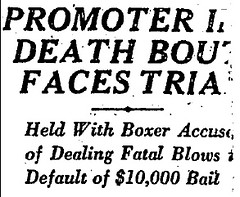
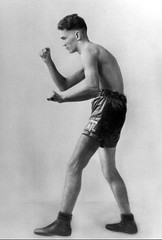
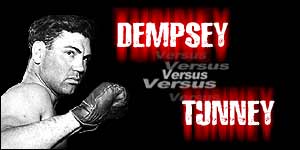 The much anticipated rematch between defending heavyweight champion Gene Tunney, the “Fighting Marine”, and former champion Jack Dempsey, the “Manassa Mauler”, will be held at Solider Field in Chicago on September 26, 1927. Tunney will dominate for the first six rounds, but during the seventh round he will find himself in a corner being pummeled by a savage combination of punches that will drive him to the floor.
The much anticipated rematch between defending heavyweight champion Gene Tunney, the “Fighting Marine”, and former champion Jack Dempsey, the “Manassa Mauler”, will be held at Solider Field in Chicago on September 26, 1927. Tunney will dominate for the first six rounds, but during the seventh round he will find himself in a corner being pummeled by a savage combination of punches that will drive him to the floor. 
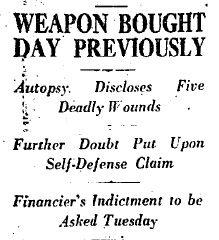
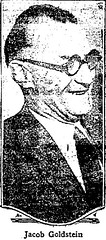 Joseph Stern, by bashing him four times over the head with a hammer and firing three bullets from a revolver into his body. It would have been less messy if only Goldstein had let an attorney handle the dissolution.
Joseph Stern, by bashing him four times over the head with a hammer and firing three bullets from a revolver into his body. It would have been less messy if only Goldstein had let an attorney handle the dissolution. 
 Convicted murderer Earl J. Clark was granted a stay of execution today as his appeal twisted its way through the State Supreme Court. There was a time when Clark’s chances to avoid the gallows seemed promising; however, following an escape from prison, things were looking grim.
Convicted murderer Earl J. Clark was granted a stay of execution today as his appeal twisted its way through the State Supreme Court. There was a time when Clark’s chances to avoid the gallows seemed promising; however, following an escape from prison, things were looking grim.
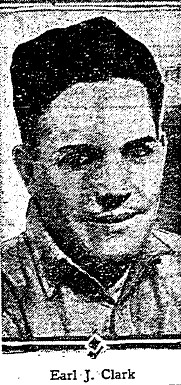 In July of 1925, Clark was sentenced to hang, but his attorneys immediately initiated an appeal to save his life. The appeal before the State Supreme Court was repeatedly delayed while Clark languished in the Los Angeles County Jail. On March 16, 1926, just days before his appeal was scheduled to come before the court, Clark and five others escaped from jail. While the five were quickly captured, Clark managed to go into hiding for over nine months. He was finally found in Minot, North Dakota, the proprietor of a paint store across the street from the local police station and husband to the daughter of one of Minot’s leading citizens.
In July of 1925, Clark was sentenced to hang, but his attorneys immediately initiated an appeal to save his life. The appeal before the State Supreme Court was repeatedly delayed while Clark languished in the Los Angeles County Jail. On March 16, 1926, just days before his appeal was scheduled to come before the court, Clark and five others escaped from jail. While the five were quickly captured, Clark managed to go into hiding for over nine months. He was finally found in Minot, North Dakota, the proprietor of a paint store across the street from the local police station and husband to the daughter of one of Minot’s leading citizens.